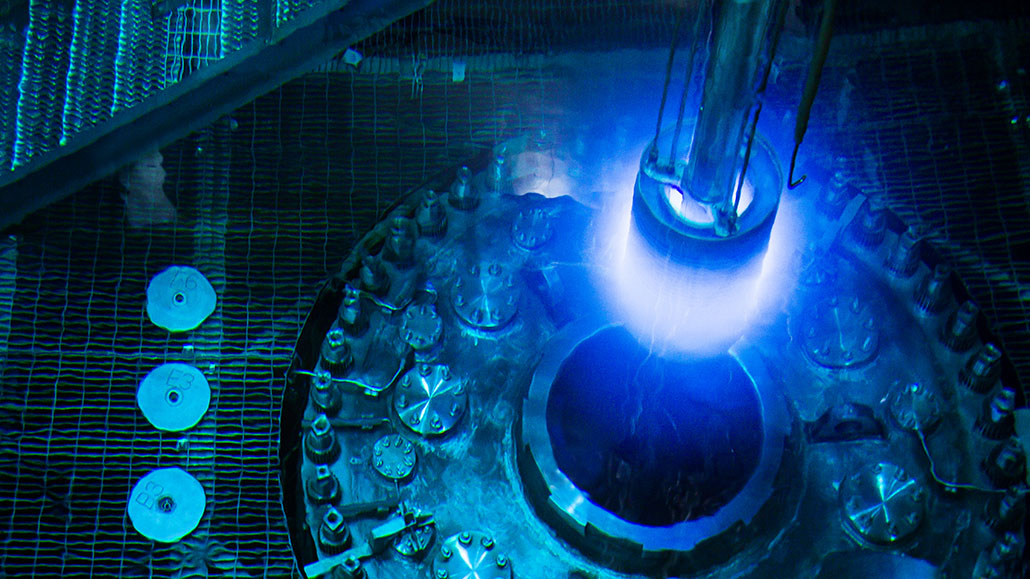Radioactivity, the phenomenon where certain elements undergo spontaneous decay, emitting radiation in the process, arises from the instability or imbalance within the atomic nucleus. To comprehensively understand this concept, we need to delve into the structure of atoms, the forces governing their stability, and the principles underlying nuclear decay.
At the heart of every atom lies its nucleus, composed of protons and neutrons, collectively referred to as nucleons, surrounded by a cloud of electrons. The nucleus is held together by the strong nuclear force, which overcomes the electrostatic repulsion between positively charged protons. This force, however, has a limited range, and beyond a certain distance, the repulsive electromagnetic force between protons becomes dominant.
In stable nuclei, the attractive strong force effectively counteracts the repulsive electromagnetic force, maintaining the nucleus’s integrity. However, in some nuclei, this balance is disrupted, leading to instability. Several factors can contribute to this instability:
-
Neutron-to-proton ratio: The stability of a nucleus depends on the ratio of neutrons to protons. In lighter elements, the ideal ratio tends to be close to 1:1. As the atomic number increases, more neutrons are needed to maintain stability due to the increasing electrostatic repulsion among protons. Nuclei with an excess of neutrons or protons relative to the stable ratio are prone to instability.
-
Size of the nucleus: Larger nuclei tend to be less stable than smaller ones. As the nucleus grows, the repulsive forces between protons become more significant, making it increasingly challenging to maintain stability.
-
Energy states: Nuclei occupy specific energy states, analogous to electron orbitals in atoms. Certain nuclei may exist in excited states with higher energy levels. Transitioning to lower energy states releases excess energy in the form of radiation, contributing to nuclear decay.
Given these factors, unstable nuclei undergo various decay processes to achieve a more stable configuration. There are several types of radioactive decay:
-
Alpha decay: In alpha decay, a nucleus emits an alpha particle, consisting of two protons and two neutrons (essentially a helium nucleus). This process reduces the nucleus’s atomic number and mass, moving it closer to a more stable configuration.
-
Beta decay: Beta decay involves the transformation of a neutron into a proton, accompanied by the emission of a beta particle (an electron) or its antiparticle, a positron. This process alters the neutron-to-proton ratio, again aiming for a more stable state.
-
Gamma decay: Gamma decay occurs when a nucleus transitions from an excited state to a lower energy state, emitting a gamma ray in the process. Unlike alpha and beta decay, gamma decay does not alter the nucleus’s composition but serves to release excess energy.
-
Other decay modes: Some nuclei undergo other decay modes, such as neutron emission, proton emission, or spontaneous fission, depending on their specific characteristics and energy states.
The concept of radioactive decay is governed by quantum mechanics and follows probabilistic behavior. While we can predict the likelihood of a nucleus decaying over a certain period (expressed as its half-life), we cannot precisely determine when an individual nucleus will decay. This inherent randomness is a fundamental aspect of radioactive processes.
Radioactive decay plays crucial roles in various natural and artificial processes, including radiometric dating, nuclear power generation, and medical imaging and treatment. Understanding the factors influencing radioactive decay is essential for interpreting experimental data, ensuring the safety of nuclear facilities, and advancing scientific knowledge.
In summary, the instability or imbalance within atomic nuclei arises from factors such as the neutron-to-proton ratio, the size of the nucleus, and the energy states of its constituent particles. Unstable nuclei undergo radioactive decay processes, such as alpha, beta, and gamma decay, to achieve a more stable configuration. While the exact timing of decay events is inherently probabilistic, the principles governing radioactive decay have profound implications across scientific disciplines and technological applications.
